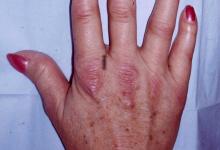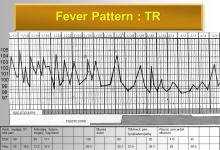How to assess ILD in your patients? Save

Have a high index of suspicion in your patients with connective tissue disease (especially systemic sclerosis, inflammatory myositis), and rheumatoid arthritis. All patients with CTD may develop ILD but it is more common (% of patients with the specific disease who have ILD) in SSc>myositis>RA>other CTDs.
Assessing your patients in 5 steps:
1. History
Ask about dyspnea and cough – consider doing this yearly – or when doing script renewals or when discussing vaccines, CV risks, etc.
Clinical Pearl - Add in your EMR good practice questions
- Vaccines
- CV Risks – BP, lipids, DM, smoking, BMI, you can use an online calculator for CV risk (Framingham, EULAR, Reynolds, etc)
- Bone Health
- Add Lung health questions – dyspnea, cough
Clinical Pearl – when you ask about dyspnea, anchor it:
When you walk uphill are you short of breath and is it different from last year?
Have people commented that you seem short of breath?
Have you had an ongoing cough NOT related to an infection
2. Physical Examination
Listen to the lung bases!
Clinical Pearl- I auscultate EVERY patient at every visit with SSc, RA, MCTD AT THE LUNG bases listening for crackles – 5 seconds per patient and document-- chest clear or findings
3. Confirm ILD Diagnosis
HRCT showing interstitial pneumonia (NSIP, UIP, OP, LIP, etc.).
Exclude environmental exposures (silica, asbestosis, etc), drugs (Nitrofurantion, amiodarone, some chemoRx, etc), infections (COVID, atypical and typical bacteria and viruses), other diseases sarcoidosis, IPF, hypersensitivity pneumonitis, etc.
PFTs (not everyone is comfortable ordering these, so refer to Pulmonology/Respirology if preferred)
Refer to a pulmonologist if ILD is present and you need help.
Clinical Pearl - My opinion: everyone with CTD/RA associated ILD that is clinically relevant should see a pulmonologist. Confirming dx including ruling out other differential dx. Following and managing ILD
Clinical Pearl - need to assess if the PFT abnormalities are:
1. An accurate test with good flow volume loop
2. Restrictive due to intrinsic restrictive defect (not extrinsic ex diaphragmatic weakness in SLE or myositis), DLCO should be relatively preserved if it is extrinsic
3. A mixed picture – obstructive (ex emphysema or reactive airways) and restrictive
-If elevated Residual Volume (RV) there is air trapping
-If obstructive FEVI/FVC<0.7
4. Risk Stratification
Type of ILD
Extent of ILD on HRCT
When following the patient – magnitude and rapidity of decline of FVC and DLCO is a poor prognosis.
Not needed: Routine bronchoscopy or lung biopsy are not needed if:
- this appears to be a gradual onset of ILD in a patient with CTD or RA
- there are no signs of infection (typical or atypical pneumonia)
- features on HRCT are classical for CTD associated ILD – esp symmetrical bibasilar
5. Monitoring
PFTs (FVC, DLCO) every 3–6 months (periodically)
HRCT if progression suspected.
What about patients sent to you from lung physicians?
How to work up a patient with ILD for suspected CTD if referred by a pulmonologist?
Look for a CTD or RA depending on the reason the patient was referred – referral to a rheumatologist is often due to a positive antibody (e.g., ANA, ENA, RF, CCP) and/or some features of one of the diseases we see. As with any consult, do a full rheumatologic history and physical exam (IA, RP, inflammatory rash, weakness, etc, rashes).
Clinical Pearl - Do NOT repeat already + antibodies and only do more investigations if warranted by your clinical judgement (ex myositis panel)
If criteria are met for RA or CTD, make the diagnosis and treat with co-management as needed.
If no diagnosis can be made but there are some CTD features, consider if the patient has IPAF associated ILD.
IPAF criteria: no CTD, but patient has ILD + ≥2 domains (clinical, serologic, morphologic)
Then classify as IPAF.
Risk stratify by ILD pattern
UIP pattern (progressive, poor prognosis).
No fibrotic pattern (NSIP, OP, LIP, mixed) (better prognosis, may respond to immunosuppression).
Rheumatology follow-up of IPAF - 10–20% develop a CTD
Clinical Pearl – You can follow the IPAF patient or inform them when to return for a rheumatological assessment (ie developing more features of a CTD/RA). You can let the referring physician know when to send the patient back. You can help to co-manage Rx if needed or decline.
I personally help with Rx, choosing patients who need Rx (worsening ILD by HRCT and/or PFTs) and Rx is chosen by which CTD I think is most likely or what I can get access to. Rx often starts with:
- Immune suppression (e.g., ground glass opacities; GGO)
- And adding anti-fibrotic Rx if worsening, and/or fibrotic lung changes on HRCT (e.g., Honey combing)
Clinical Pearl – Treat what is treatable!










If you are a health practitioner, you may Login/Register to comment.
Due to the nature of these comment forums, only health practitioners are allowed to comment at this time.